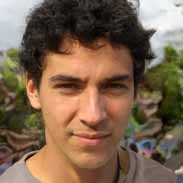Environmental Science Chapter 1 Study Guide – Flashcards
Unlock all answers in this set
Unlock answersquestion
What is the environment?
answer
The environment is everything around us.
question
What is environmental science?
answer
The study of how humans interact with the environment.
question
Is environmental science pure or applied?
answer
Applied.
question
How is environmental science multiple in disciplines?
answer
It involves many different fields of study.
question
What are the two primary areas of focus of environmental science?
answer
How we use natural resources, how our actions alter the environment.
question
What are the primary goals of environmental science?
answer
To understand and solve environmental problems.
question
Describe the characterestics of hunter-gatherer societies.
answer
People who obtain food by collecting plants and hunting wild animals or scavenging their remains.
question
What type of impact did hunter-gatherers have on the environment?
answer
Set fires to prairies and prevented the growth of trees, helped spread plants to new areas.
question
Describe the impact of the agricultural revolution on populations and the environment.
answer
The agricultural revolution allowed the human population to grow at unprecedented rates. Habitat was destroyed. Soil loss, floods, and water shortages occured.
question
Describe the impact of the industrial revolution on populations and the environment.
answer
The industrial revolution allowed for populations in urban areas to grow, and pollution and habitat loss became much more common.
question
What has improved the quality of life of our populations?
answer
Light bulbs, agriculture productivity. Sanitation, nutrition, and medical care improvements.
question
What has beens sacrificied along the way of this imporvement in the quality of life?
answer
The well-being of the environment.
question
Describe the earth as a closed system.
answer
The only thing that enteres Earth's atmosphere in large amounts is energy from the sun, and the only thing that leaves in large amounts is heat.
question
What are the three scales that environmental problems can occur?
answer
Local-your community buying a new landfill. Regional-a polluted river over 1,000 miles away affecting the region's water. Global-depletion of the ozone layer.
question
What is the effect of population growth on our resources?
answer
Producing enough food for large populations has environmental consequences such as habitat destruction and pesticide pollution.
question
What is a natural resource?
answer
Natural resources are any natural materials that are used by humans, such as water, petroleum, minerals, forests, and animals.
question
What is a renewable resource?
answer
Renewable resources can be replaced relatively quickly by natural process, such as energy from the sun, water, wood, soil, or air.
question
What is a nonrenewable resource?
answer
Nonrenewable resources form at a much slower rate than they are consumed, such as metals (iron, aluminum, copper), nonmetallic materials such as salt, sand and clay, fossil fuels.
question
Would sunlight entering the earth's atmosphere be considered a closed or open system?
answer
Open.
question
What is pollution?
answer
Pollution is an undesirable change in the natural environment that is caused by the introduction of substances that were harmful to living organisms or by excessive wastes, heat, noise, or radiation.
question
What are biodegradable pollutants?
answer
Pollutants that can be broken down by natural process, such as human sewage or newspapers.
question
What are nondegradable pollutants?
answer
Pollutants that cannot be broken down by natural processes, such as mercury, lead, and some kinds of plastics.
question
What is meant by loss of biodiversity?
answer
Decreasing of number and variety of species that live in an area.
question
What is extinction?
answer
When a species disappears from the earth entirely.
question
What is mass extinction?
answer
Large-scale extinctions.
question
Are life forms natural resources?
answer
Yes.
question
What is the lesson of the Tragedy of the Commons?
answer
We must focus on the long-term welfare of society instead of the short-term interest of individuals.
question
What is supply and demand?
answer
States that the greater the demand for a limited supply of something, the more that something is worth.
question
What is a cost benefit analysis?
answer
Balances the cost of the action against the benefits one expects from it.
question
What is a risk assessment?
answer
A tool that helps us create cost-effective ways to protect our health and the environment.
question
What are the characteristics of a developed country?
answer
Developed countries have higher average incomes, slower population growht, diverse industrial economies, and stronger social support systems.
question
What are the characterestics of a developing country?
answer
Developing countries have lower average incomes, simple and agriculture based economies, and rapid population growth.
question
Describe population and consumpition, and the pressures they exert on our resources.
answer
The human population in some areas is growing too quickly for the local environment to support, and people are using up, wasting, or polluting many resources faster than they can be renewed, replaces, or cleaned up. With so many people and so few resources, the exisiting resoruces are used up completely until there is nothing left.
question
What are the consumption trends in developed countries?
answer
Developed nations use up about 75% of the world's resources, even though they only make up about 20% of the world's population.
question
What is an ecological footprint?
answer
Shows the productive area of Earth needed to support one person in a particular country.
question
What must we do to attain a sustainable world?
answer
All parts of society, individual citizens, industry and government must cooperate.
question
Define sustainability.
answer
The condition in which human needs are met in such a way that a human population can surivive indefinitely.



